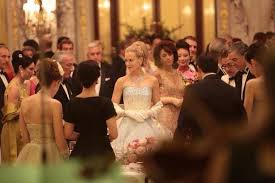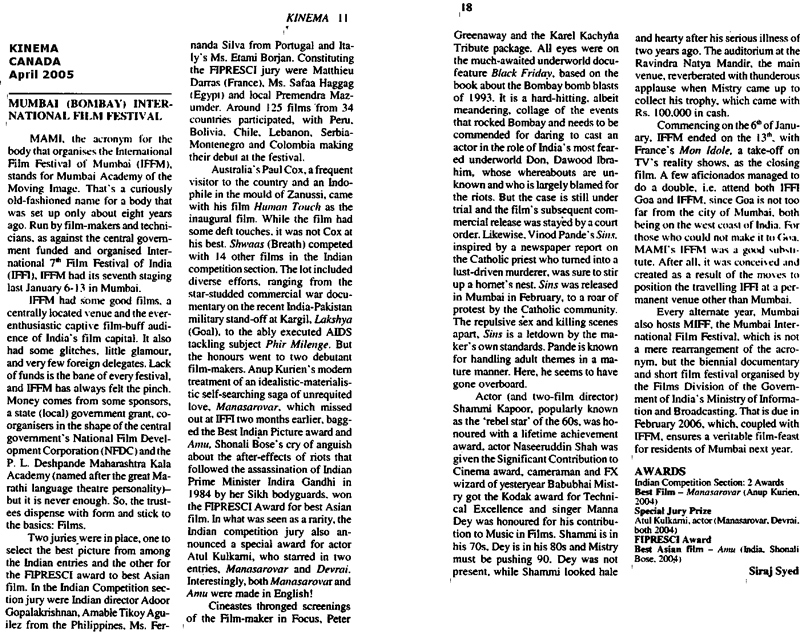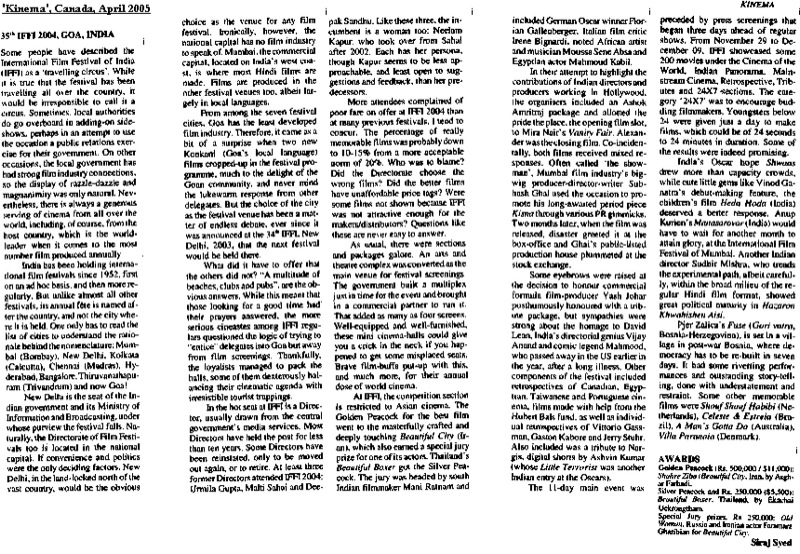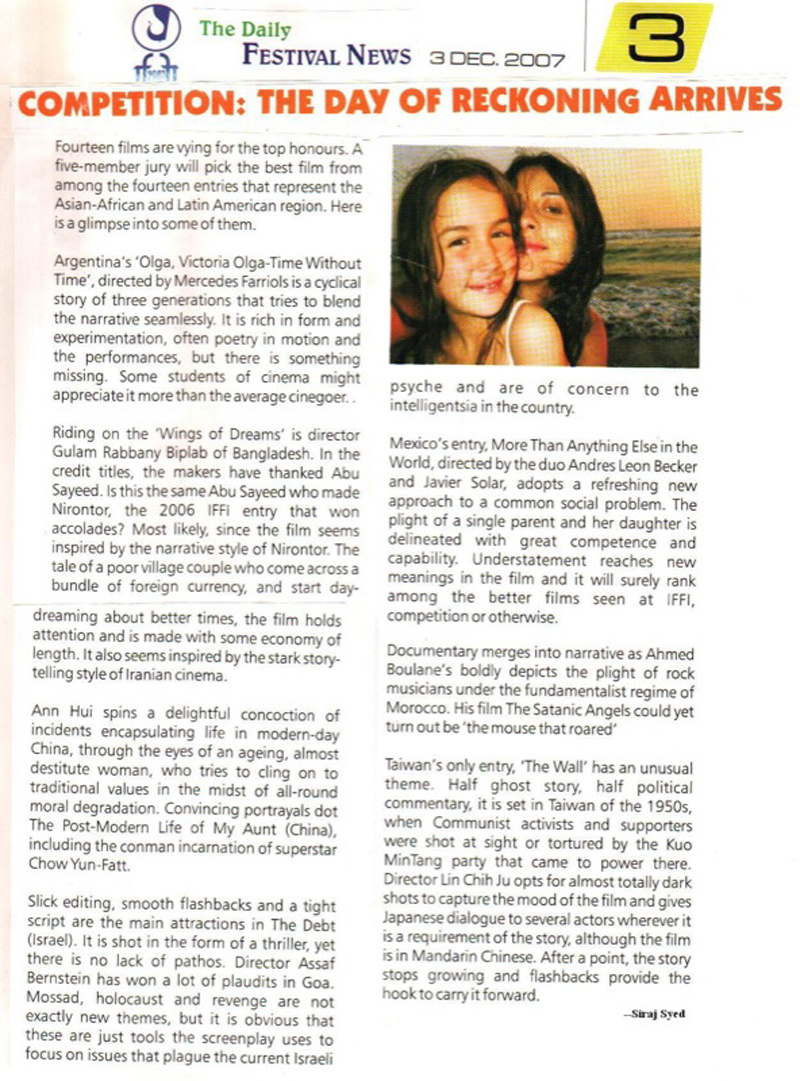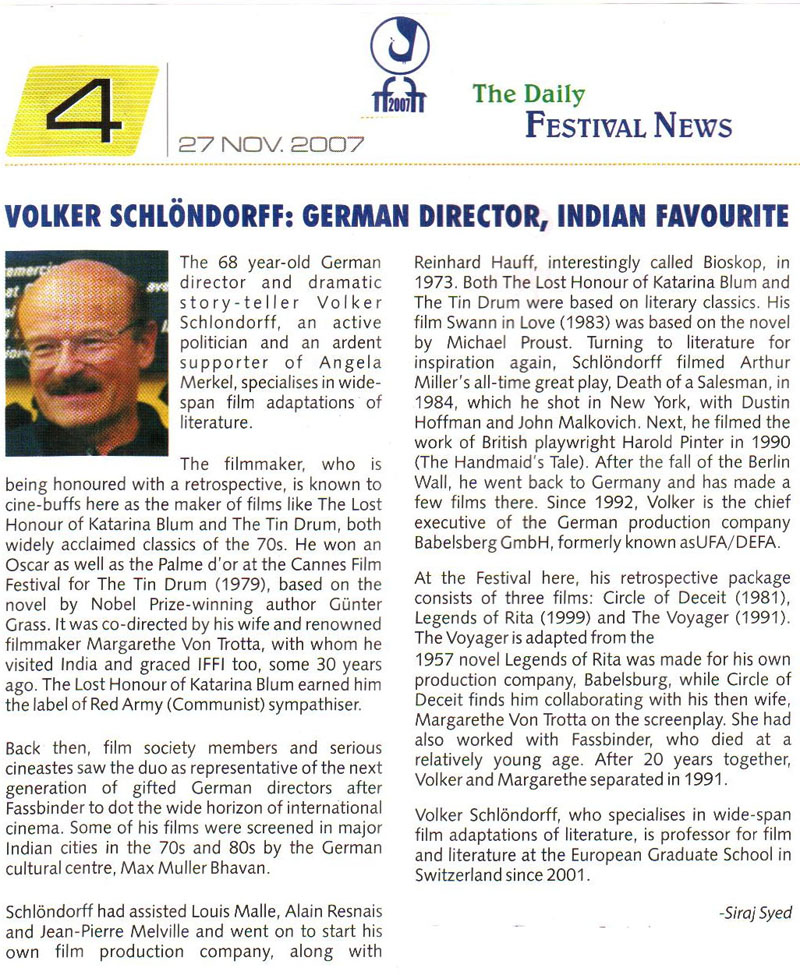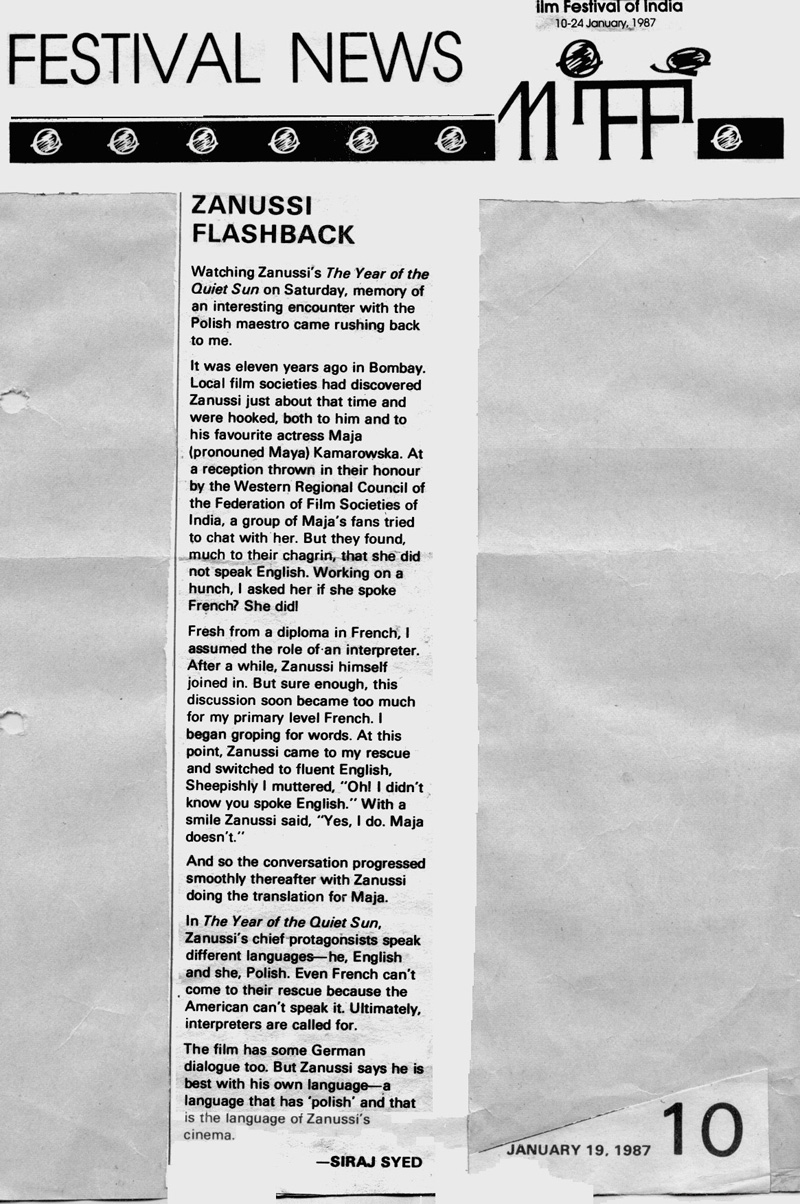|
|
||
|
Pro Tools
FILMFESTIVALS | 24/7 world wide coverageWelcome ! Enjoy the best of both worlds: Film & Festival News, exploring the best of the film festivals community. Launched in 1995, relentlessly connecting films to festivals, documenting and promoting festivals worldwide. Working on an upgrade soon. For collaboration, editorial contributions, or publicity, please send us an email here. User login |
Grace of Monaco, Review
Grace of Monaco Where would you hope to find the Prince of Monaco, the Oscar-winning actress Grace Kelly, Charles de Gaulle, Robert McNamara (former US Defense Secretary), Maria Callas (legendary opera singer), Alfred Hitchcock and Aristotle Onassis (Greek business tycoon) on the same page? In a fictionalised biopic called Grace of Monaco. Perhaps too fictionalised, according to some. Writer Arash Amel (who earlier wrote The Expatriate, 2012), on being accused of taking too many liberties with the biography, and on drawing flak from the Prince’s family, retorted, “It was never about the truth in a literal way, it was about the interpretation of an icon. I think every country in the world will see this story a little bit differently. America and France are just the furthest apart on that spectrum.” Set in 1962, six years after her celebrated ‘wedding of the century’, Grace of Monaco is a snapshot of a year in the life of the twentieth century's most iconic Princess--former Hollywood star Grace Kelly--as she strived to reconcile her past and her present, a yearning for a return to the big screen with her newfound role as a mother, wife to Prince Rainier III, of Monaco, a French Protectorate. While considering offers and persistent invitations from Alfred Hitchcock (‘Hitch’ to her) to return to her former career in Hollywood, Grace found herself plunged into a personal crisis, when Rainier's modernisation of an ailing Monaco was halted by Charles de Gaulle, the French President. De Gaulle wanted to not only impose French taxation on Monaco, but reclaim the principality for France, by force, seeing it as an economic, tax-free haven for businessmen from next-door neighbor, France. Nicole Kidman is cast as Grace Kelly. At 47, she has 33 years of acting experience, and is playing a woman who was 20 years younger than her at the given point in history. This is not her best role, and not her worst. It will, nevertheless, remain a dream role. Films of this genre provide at least two or three opportunities for the protagonist to redeem herself, one of which is a demonstration of unexpected statesmanship and a second is an emotionally moving, from-the-heart speech. On both occasions, she acquits herself well. Her attempts to integrate into the culture, customs and language of her adopted country appear less convincing, sometimes even laughable, though they must have been written-in with intention of creating a few smiles. Tim Roth, 52, is also playing a man twenty years less than his real age. The actor who played Vincent van Gogh in 1990 brings a quiet grace and dignity to this complex role. His lack of cheer and half as frown strikes you as odd, till you discover that Monaco had nothing to feel cheerful in the early 60s. Frank Langella has a meaty, sympathetic role as the priest Tucker, who is the only person Grace confides in, and who becomes her friend and guide. Milo Ventimiglia is suave as Rupert Allan, the publicist. As Madge, the woman involved in palace intrigue, Parker Posey fits the role, as does her motivator, Geraldine Sommerville (Princess Antoinette). Derek Jacobi has an interesting role as the Count who specialises in traditional customs and practices of Monaco. Two titans of their time are played by Roger-Ashton Griffiths (Alfred Hitchcock) and André Penvern (Charles de Gaulle). For those of us who did not get to see or hear much of them, the two portrayals might become reference points. Of course, there is visual similarity to go with it. But did Hitchcock speak like Griffiths does in this film? Olivier Dahan is best known as the director of La Vie en Rose (2006), a biopic on the life of Edith Piaf. The film brought its lead actress Marion Cotillard numerous awards: a Golden Globe, the BAFTA, the British Academy of Film and Television Arts Award for Best Actress, a César for Best Actress and, finally, the Oscar for Best Actress. Dahan has limited himself to a brief opening scene leading on to the wedding, to mark a starting point of the present film. The scene itself is well conceived. In the palace, Grace’s predicament is multi-faceted and as far removed from her life as an actress as it could be. Yet, there are similarities. After all, she was a top star, and fame was not a new component. This element is cashed-in on too. In dealing with multiple layers of the plot, like palace intrigue, economic crisis, De Gaulle’s country blockade, the lure of a comeback to the silver screen, etc., Dahan may have missed a trick or two. The tracks seem to diverge, whereas the experience of watching the film might have been more empathetic had they converged. Rating: **1/2 Trailer: https://www.warnerbros.co.uk/movies/grace-of-monaco Who was Grace Kelly? In the 1920’s, John Brendan Kelly, a Philadelphia brick merchant (he is ridiculed as “brick-layer” in the film), had won recognition as a champion athlete (oarsman), a leading businessman, and a civic leader. But Grace Kelly, born on November 12, 1929, one of his five children, seemed out of place in the family of competitive extroverts. Her mother was a cover-girl while she nursed a desire to take up acting. At 18, Grace decided to leave home to study acting at the American Academy of Dramatic Arts, in New York. Determined to pay her own way, she looks for modelling jobs after class hours. She got some modelling assignments for cigarette commercials, and finally, a bit-role in Fourteen Hours (1951). In 1952 Grace Kelly got the kind of break every aspiring starlet hopes for--playing Gary Cooper’s wife in High Noon. Mogambo (1953) brought her an Oscar nomination for Best Supporting Actress. Immediately afterwards, she bagged the Best Actress Oscar for The Country Girl. Then Grace got to work with director Alfred Hitchcock, who had this to say about her, “There are many leading women. But Grace Kelly is a leading lady”. They made three films together: Rear Window, Dial M for Murder and To Catch a Thief. It was during the making of To Catch a Thief (1955), which was shot on the French Riviera, not too far from Monaco, that she met Prince Rainier Grimaldi III. He was 32, she was 26. They married in 1956. Several comeback stories went around—in the film, we see Alfred Hitchcock offering her Marnie (1964), the story of a habitual thief, who was ultimately played by Tippi Hedren—but she never acted again. Grace became the working president Monaco’s Red Cross and the guiding hand behind many local charities. In 1962, the citizens of Monaco were dismayed when Princess Grace announced that she would star again in a Hollywood film. So, bowing to their wishes, Princess Grace cancelled her return to Hollywood. Her death in 1982, aged 53, after a car crash, remains a subject of speculative rumours. Cheryl Ladd played Grace Kelly in the 1983 TV film, Grace Kelly. 13.06.2014 | Siraj Syed's blog Cat. : Fictionalised biopic Grace of Monaco Independent
|
LinksThe Bulletin Board > The Bulletin Board Blog Following News Interview with IFTA Chairman (AFM)
Interview with Cannes Marche du Film Director
Filmfestivals.com dailies live coverage from > Live from India
Useful links for the indies: > Big files transfer
+ SUBSCRIBE to the weekly Newsletter Deals+ Special offers and discounts from filmfestivals.com Selected fun offers
> Bonus Casino
User imagesAbout Siraj Syed Syed Siraj Syed Siraj (Siraj Associates) Siraj Syed is a film-critic since 1970 and a Former President of the Freelance Film Journalists' Combine of India.He is the India Correspondent of FilmFestivals.com and a member of FIPRESCI, the international Federation of Film Critics, Munich, GermanySiraj Syed has contributed over 1,015 articles on cinema, international film festivals, conventions, exhibitions, etc., most recently, at IFFI (Goa), MIFF (Mumbai), MFF/MAMI (Mumbai) and CommunicAsia (Singapore). He often edits film festival daily bulletins.He is also an actor and a dubbing artiste. Further, he has been teaching media, acting and dubbing at over 30 institutes in India and Singapore, since 1984.View my profile Send me a message The EditorUser contributions |

















